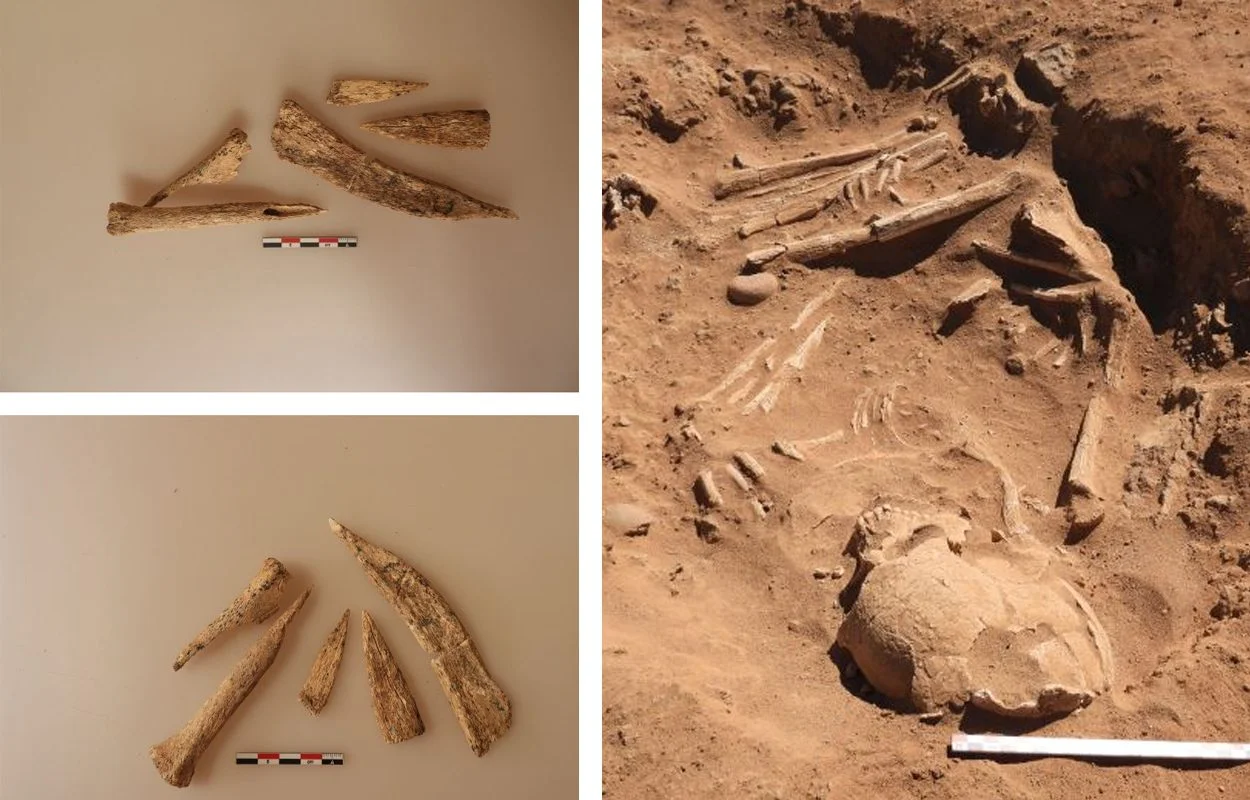Archaeologists from the Polish Academy of Sciences have uncovered bone tools used for bleeding cows during excavations in the Letti Basin in northern Sudan.
The study was conducted by researchers from the Institute of Archaeology and Ethnology of the Polish Academy of Sciences, who were researching early communities that dealt with cattle breeding in the Middle Nile Valley to determine whether domestication of cattle occurred independently or were imported from the Middle East.
Excavations of a cemetery in the Letti Basin revealed 7,000-year-old burials, with one burial pit containing the remains of an elderly man with fragments of animal skin that were coloured with a red mineral dye – ochre. Ochre is a natural clay earth pigment, a mixture of ferric oxide and varying amounts of clay and sand, which has been used as a colouring agent in Africa for over 200,000 years.
The burial pit also contained a small bowl with traces of ochre and 5 bone blades most likely made from cattle bones. A closer examination of the bone blades showed that they had a funnel or gutter form and were still very sharp.
Dr. Piotr Osypiński, said: “Given the characteristic shape of the blades, they could have been used to bleed cows, similar to modern African shepherds, such as the Maasai. Without any harm to the animals, cows’ blood is drunk on special occasions, usually mixed with milk. It would be the oldest known record of this type of practice”.
In another burial, archaeologists discovered a small oval cavity containing the remains of a young man also buried with animal skin that is coloured with red ochre. The skeleton was placed in the fetal position, however, an anthropological study of the man’s skull revealed a precisely cut round hole measuring 5 cm’s in diameter.
“The man showed no signs of advanced healing, so it is likely that this procedure may have been related to his death. It is hard to imagine how 7,000 years ago, people undertook dangerous and complicated surgical procedures using primitive tools,” added Osypiński.
“The Neolithic pastoral communities of sub-Saharan Africa are extremely important to the history of this continent. They were at the genesis of the formation of ancient civilisations – including the Ancient Egyptians. Due to their mobile lifestyle and the thousands of years that separate us from them, we still know very little about them” – explained Dr. Osypiński.
Header Image Credit : M.Osypinska





